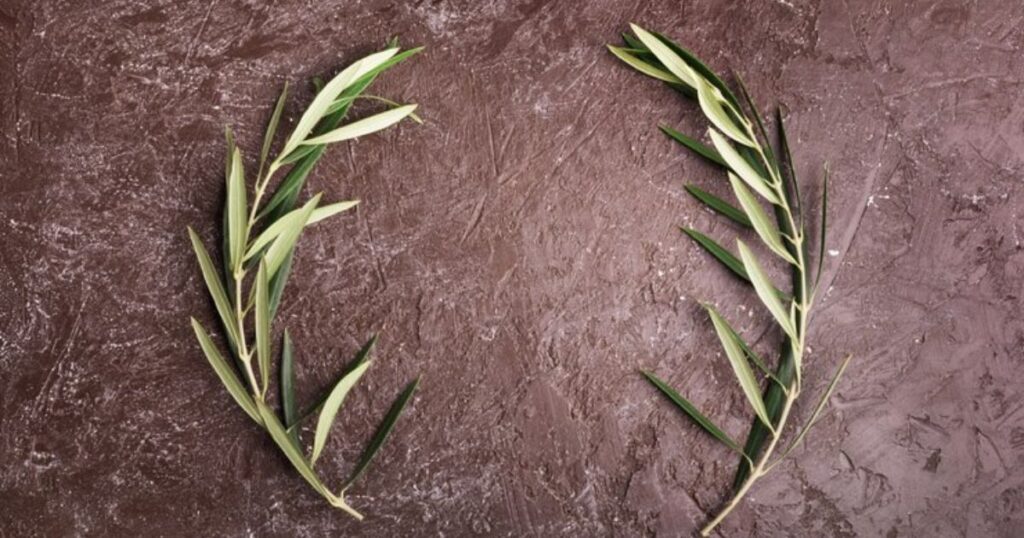Olive branches have long been cherished for their symbolism and practical uses, transcending cultures, religions, and time. These modest sprigs of greenery carry deep historical, spiritual, and ecological significance, representing peace, resilience, and sustenance. This article delves into the fascinating world of olive branches, exploring their history, symbolism, and various applications in modern life.
Historical Roots of Olive Branches
The story of olive branches dates back thousands of years to ancient Mediterranean civilizations. These communities revered olive trees not only for their fruits but also for the spiritual significance of their branches. In ancient Greece, olive branches symbolized victory and honor, often awarded to Olympic champions. Similarly, the olive branch played a pivotal role in Roman rituals, marking it as a token of peace and goodwill.
The Biblical Connection
In Christianity, olive branches hold a sacred place, often associated with divine favor and reconciliation. The most notable biblical reference is in the story of Noah’s Ark, where a dove brings back an olive branch as a sign of the flood’s end and God’s promise of peace. This enduring imagery has cemented the olive branch as a universal symbol of hope and renewal.
A Universal Emblem of Peace
Across various cultures, the olive branch has been embraced as a sign of peace. From ancient treaties to modern diplomatic symbols, the olive branch transcends borders and languages. Its use in the emblem of the United Nations underscores its global significance in promoting harmony and cooperation.
The Olive Tree: A Lifeline of Mediterranean Cultures
The olive tree, from which the branches are derived, is deeply rooted in Mediterranean history and lifestyle. These trees, known for their resilience, thrive in harsh climates, symbolizing endurance and adaptability. Olive cultivation has been central to the region’s economy and culture for centuries.
Medicinal and Nutritional Benefits
Olive leaves and their extracts have been used in traditional medicine for their healing properties. Rich in antioxidants and anti-inflammatory compounds, they are believed to boost immunity and support heart health. These benefits extend to olive oil, a staple of the Mediterranean diet, celebrated for its nutritional value and versatility.
Modern Uses of Olive Branches
While the symbolic significance of olive branches persists, they have also found practical applications in contemporary life. Olive branches are commonly used in home decor, adding a touch of natural elegance. Additionally, they are employed in ceremonies and events as a token of goodwill and unity.
Olive Branches in Art and Literature
Throughout history, artists and writers have drawn inspiration from olive branches. They feature prominently in classical paintings, poetry, and modern literature, often symbolizing themes of peace, victory, and renewal. This artistic legacy continues to shape how we view and appreciate olive branches today.
Cultural Festivals Celebrating Olive Branches
Many Mediterranean communities hold festivals dedicated to the olive harvest, where branches play a ceremonial role. These events celebrate not just the agricultural significance of the olive tree but also its cultural and spiritual importance.
Environmental Significance
Olive trees and branches contribute to environmental sustainability. Olive groves act as carbon sinks, helping to mitigate climate change. Furthermore, their ability to thrive in arid regions makes them vital for combating desertification and supporting biodiversity.
Symbolism in Modern Diplomacy
Olive branches remain a powerful symbol in contemporary diplomacy. Leaders and organizations often use olive branches in speeches and treaties to signify intentions of peace and reconciliation. This enduring symbolism reflects humanity’s collective desire for harmony.
Olive Branch Tattoos and Their Meanings
In modern times, olive branches have found a place in personal expression through tattoos. These designs are popular for their aesthetic appeal and deep meanings, often chosen to symbolize peace, strength, or personal growth.
Olive Branches in Weddings and Celebrations
Olive branches are frequently incorporated into wedding ceremonies, symbolizing unity and blessings for the couple. Their timeless elegance makes them a favorite choice for decorations, floral arrangements, and even bridal crowns.
The Role of Olive Branches in Mental Well-Being
The calming imagery of olive branches is often associated with mental peace and well-being. They are used in art therapy, mindfulness practices, and even interior design to create a tranquil and harmonious environment.
Preserving the Legacy of Olive Trees
Efforts to preserve ancient olive trees and promote sustainable cultivation practices are growing worldwide. These initiatives aim to protect this valuable resource for future generations, ensuring that olive branches continue to symbolize peace and prosperity.
Conclusion
Olive bran’ches are much more than simple tree offshoots; they are timeless symbols of peace, resilience, and cultural unity. From their historical roots to modern applications, they continue to inspire and enrich lives worldwide. Whether adorning a wedding altar, appearing in art, or symbolizing peace between nations, olive branches remain a powerful emblem of hope and harmony.
FAQs
Why are olive bran’ches associated with peace?
Olive branches have been linked to peace due to their historical and biblical significance, symbolizing reconciliation, hope, and harmony.
What are some practical uses of olive br’anches?
They are used in home decor, ceremonies, art, and even traditional medicine for their aesthetic and symbolic value.
How do olive trees benefit the environment?
Olive trees act as carbon sinks, combat desertification, and support biodiversity, making them crucial for environmental sustainability.
Are olive bran’ches commonly used in modern diplomacy?
Yes, they are a universal symbol of peace and are frequently featured in diplomatic contexts, such as treaties and emblems.
Can olive bran’ches be grown outside the Mediterranean?
While olive trees thrive in Mediterranean climates, they can be cultivated in other regions with similar conditions, such as parts of California and Australia.







